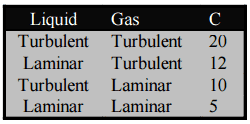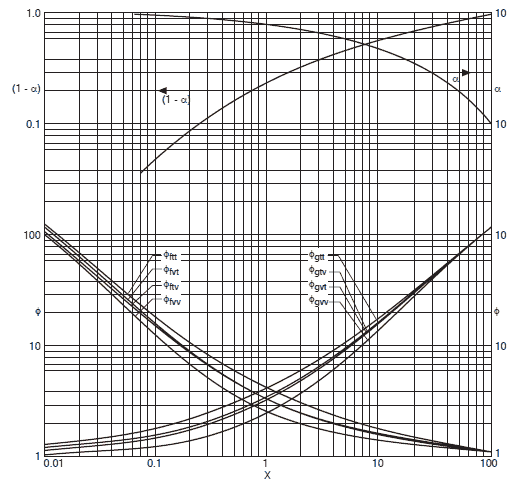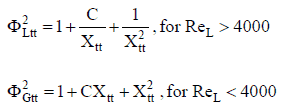Lockhart-Martinelli correlation
An alternate approach to calculate two-phase pressure drop is the separated-phases model.
In this model, the phases are considered to be flowing separately in the channel, each occupying a given fraction of the channel cross section and each with a given velocity. It is obvious the predicting of the void fraction is very important for these methods. Numerous methods are available for predicting the void fraction.
The method of Lockhart and Martinelli is the original method that predicted the two-phase frictional pressure drop based on a friction multiplicator for the liquid-phase, or the vapor-phase:
∆pfrict = Φltt2 . ∆pl (liquid-phase ∆p)
∆pfrict = Φgtt2 . ∆pg (vapor-phase ∆p)
The single-phase friction factors of the liquid fl and the vapor fg are based on the single phase flowing alone in the channel, in either viscous laminar (v) or turbulent (t) regimes.
∆pl can be calculated classically, but with application of (1-x)2 in the expression and ∆pg with application of vapor quality x2 respectively.
The two-phase multipliers Φltt2 and Φgtt2 are equal to:
where Xtt is the Martinelli’s parameter defined as:

The Lockhart-Martinelli correlation has been found to be adequate for two-phase flows at low and moderate pressures. For applications at higher pressures, the revised models of Martinelli and Nelson (1948) and Thom (1964) are recommended.

We hope, this article, Lockhart-Martinelli correlation, helps you. If so, give us a like in the sidebar. Main purpose of this website is to help the public to learn some interesting and important information about thermal engineering.

